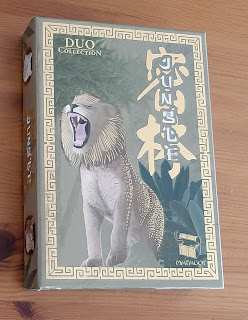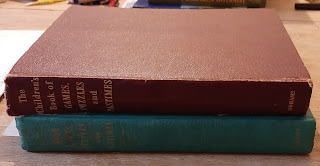Jungle game: a relative of Stratego

For the Memorial Day weekend, I grabbed a copy of "the Jungle game" from an eBay seller. This is a game that is often quoted as being a precursor to Stratego, and the similarities are obvious. There are pieces with values from 1 to 8 on a board with two big impassable ponds in the middle. But that's about it. In Jungle, the pieces start off at fixed locations as shown on the board, and their values are always visible. In Stratego, you choose where to place all your pieces and you don't know which piece you're attacking until it's too late -- unless you saw the piece before and have a really good memory. In Jungle, you try to get a piece to a specific space behind the enemy lines, but in Stratego you avoid bombs and try to capture the flag without knowing where it is at the start of the game. After the frustration in previous posts about the faulty, fabricated history of various games, I'm not going to go into all the stories about this game. Let...







